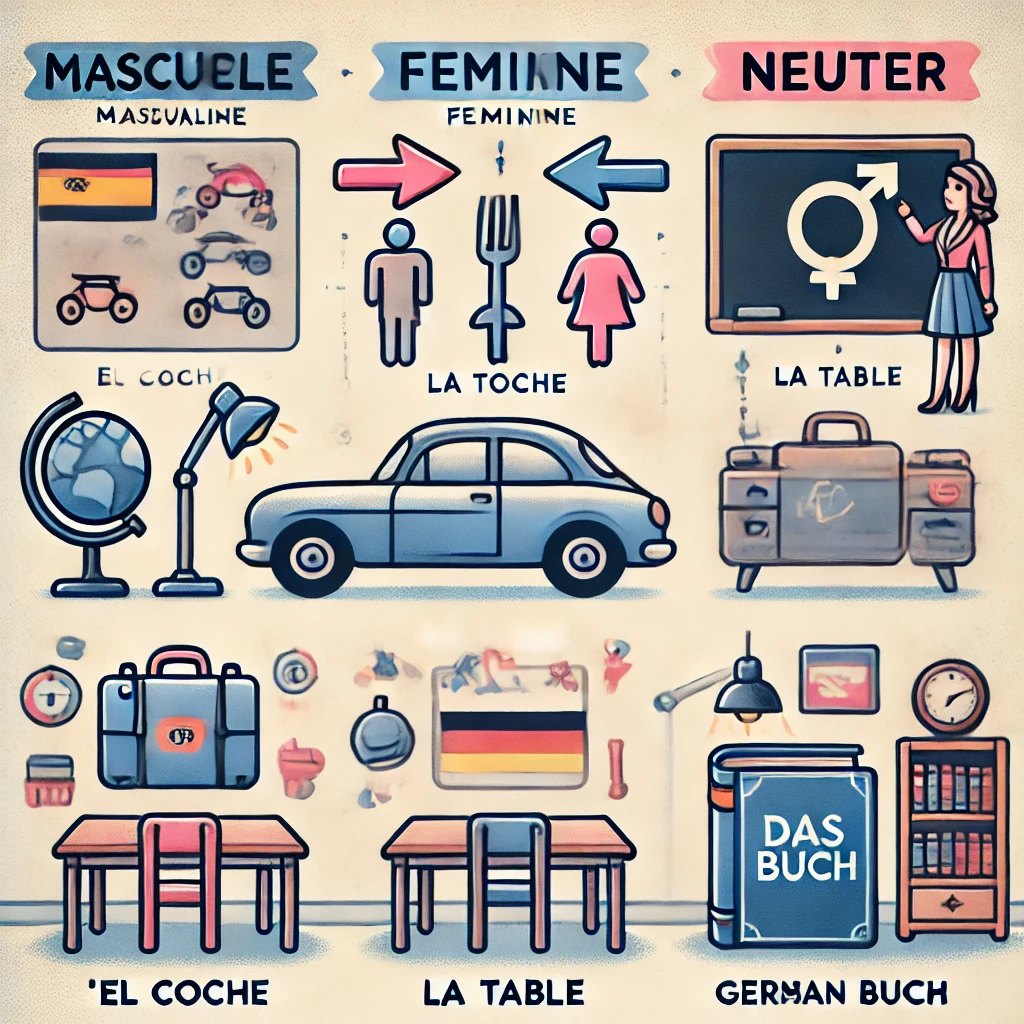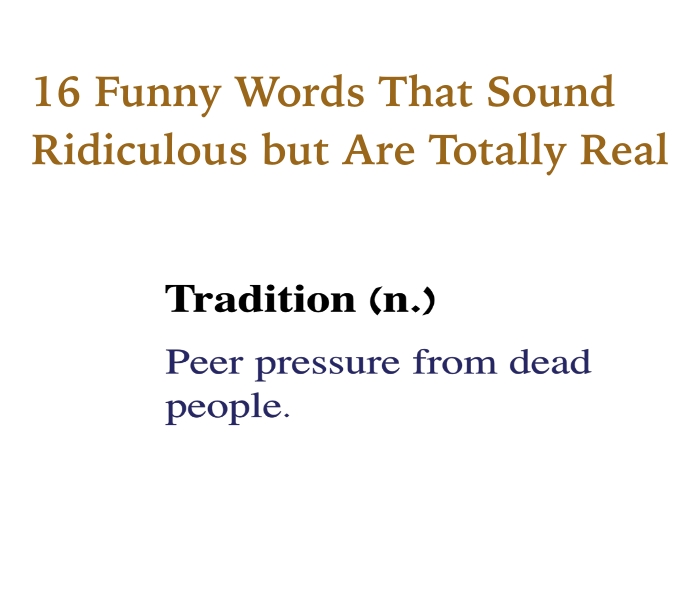If you’ve ever tried learning a European language like French, Spanish, or German, you’ve probably come across one of the trickiest concepts—gendered nouns. It might seem baffling at first: Why would an inanimate object like a chair be either masculine or feminine? And how do native speakers instinctively know which articles to use?
Thank you for reading this post, don't forget to subscribe!This linguistic feature, though perplexing for English speakers, is deeply ingrained in many languages across Europe. In this article, we’ll uncover the mysteries behind gendered nouns and articles, why they exist, and how they impact language learning. We’ll also explore fascinating real-life examples and studies that reveal just how these linguistic quirks shape the way we speak and think.
1. What Are Gendered Nouns?
In many European languages, nouns are classified into different genders—usually masculine, feminine, and sometimes neuter. The gender of the noun determines the form of accompanying words like articles and adjectives.
For instance:
- In French, “the table” is feminine: la table.
- In German, “the car” is neuter: das Auto.
- In Spanish, “the book” is masculine: el libro.
This means that to speak fluently, you not only have to remember the word but also know its gender and how to adjust other words accordingly.
2. Why Do Languages Have Grammatical Gender? | Ask a Linguist
3. The Origins of Gendered Nouns
The concept of gender in language dates back thousands of years. Many believe it originated from the need to distinguish between animate and inanimate objects or between different categories of things. In Indo-European languages (from which many European languages descend), the idea of grammatical gender evolved and persisted into modern languages.
4. How Gendered Nouns Work in Different Languages
A. French: La and Le
In French, every noun is either masculine or feminine. There’s no neuter gender, and unlike in English, gender is not related to biological sex but is an inherent grammatical property.
- Example: “Le chat” (the cat, masculine), “La chaise” (the chair, feminine).
French learners often struggle with memorizing which noun belongs to which gender, but over time, patterns begin to emerge. Nouns ending in -e are often feminine, while those ending in consonants tend to be masculine, though there are exceptions.
B. Spanish: El and La
In Spanish, nouns also have a masculine or feminine gender. The rule is generally straightforward:
- El for masculine nouns, and
- La for feminine ones.
Similar to French, Spanish has patterns that help learners—nouns ending in -o are usually masculine, and those ending in -a are typically feminine.
- Example: “El coche” (the car, masculine), “La casa” (the house, feminine).
Interestingly, a few words like el día (the day) are exceptions to these rules, which can confuse learners.
C. German: Der, Die, and Das
German, with its three genders—masculine, feminine, and neuter—is known to be particularly challenging.
- Der (masculine),
- Die (feminine), and
- Das (neuter) govern the way you structure sentences in German.
- Example: “Der Baum” (the tree, masculine), “Die Blume” (the flower, feminine), “Das Buch” (the book, neuter).
A study from the Max Planck Institute for Psycholinguistics revealed that even native German speakers sometimes struggle with determining the gender of some nouns, especially newer ones or borrowed words, as these categories can be a bit arbitrary.

5. The Impact of Gendered Nouns on Thinking
The way languages categorize nouns by gender can actually influence how speakers think about objects. Studies suggest that speakers of gendered languages often assign characteristics or traits to inanimate objects based on their grammatical gender.
For example, a study by Boroditsky, Schmidt, and Phillips (2003) found that native speakers of Spanish and German described objects in gender-conforming ways. When asked to describe a key, which is masculine in German (der Schlüssel) but feminine in Spanish (la llave), German speakers were more likely to use adjectives like “hard” and “heavy,” while Spanish speakers used words like “intricate” and “shiny.”
This phenomenon suggests that the gender assigned to a word can subconsciously affect the way speakers of a language perceive the world around them.
Ever Wonder What Happens in the Brain of a Polyglot?: Why Gendered Nouns in European Languages Will Blow Your Mind: The Secrets Behind Masculine, Feminine, and Neuter Words15 Funny and Mind-Bending Palindrome Examples You’ll Love!: Why Gendered Nouns in European Languages Will Blow Your Mind: The Secrets Behind Masculine, Feminine, and Neuter Words6. Why Do Some Languages Lose Gender?
Interestingly, while many European languages still have gendered nouns, some have either lost them or never had them in the first place. English, for instance, once had gendered nouns, but they gradually disappeared over time. Linguists believe this shift may have been due to the simplification of language to make communication easier, especially after the Norman Conquest introduced French into the English-speaking world, further complicating the linguistic landscape.
7. Challenges for Language Learners
For non-native speakers, mastering gendered nouns can be one of the toughest aspects of learning a new language. There are few universal rules, and learners often have to rely on rote memorization. However, as with any aspect of language, practice makes perfect.
Here are some tips for learners:
- Look for Patterns: In many cases, noun endings can give you a clue about gender. For example, -o in Spanish often indicates masculine, and -a suggests feminine.
- Use Mnemonics: Creating memory aids can help you remember noun genders more easily. For instance, associate “la table” with a female figure, imagining a “lady sitting at a table.”
- Practice, Practice, Practice: Consistent exposure to the language in everyday contexts will help you internalize the gender rules.
Conclusion: The Fascination of Gendered Nouns
The concept of gendered nouns might seem odd at first, but it’s a fascinating part of many European languages. It influences not just how we speak but also how we think about the world around us. While the learning curve can be steep for non-native speakers, understanding gendered nouns unlocks a deeper connection to the culture and structure of the language.
Next time you’re learning French, German, or Spanish, embrace the challenge—because once you master gendered nouns, you’ll feel like you’ve cracked one of the biggest mysteries in European languages!
Read Also: Ever Wonder What Happens in the Brain of a Polyglot?
What are gendered nouns in European languages?
Gendered nouns are nouns that are classified as masculine, feminine, or neuter in languages like French, Spanish, and German. The gender determines how articles and adjectives are used with the noun.
Why do languages like French and Spanish have gendered nouns?
The concept of gendered nouns evolved in many European languages from their Indo-European roots. It’s a grammatical system that helps categorize words, though it’s not always logical from a modern perspective.
How do I know if a noun is masculine or feminine in French or Spanish?
In French and Spanish, noun endings can often give clues to gender. For example, nouns ending in -o in Spanish are usually masculine, while those ending in -a are often feminine. However, there are exceptions that learners need to memorize.
Do gendered nouns affect how people think?
Yes, studies suggest that speakers of gendered languages may unconsciously attribute certain characteristics to objects based on their grammatical gender. For example, Spanish and German speakers describe objects like “keys” differently due to the gender of the word in their language.
Why does English not have gendered nouns anymore?
English once had gendered nouns, but they gradually disappeared as the language evolved and simplified over time, particularly after the influence of Norman French during the medieval period.







